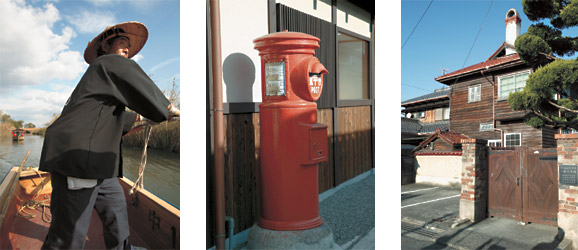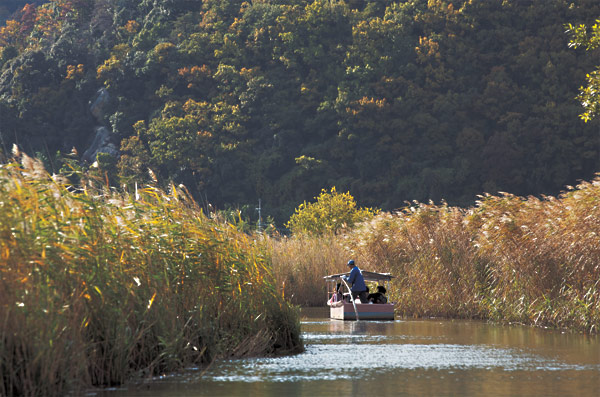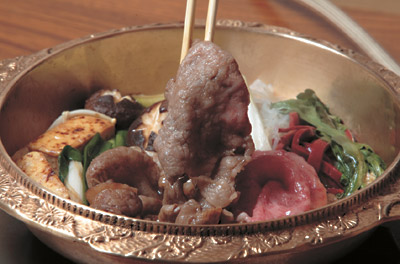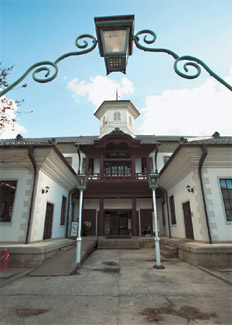Japan Travelogue Omi Hachiman
I left them all at the shrine and took the ropeway to the top of Mount Hachiman. Zuiryu-ji Temple, one attraction there is dedicated to the memory of the castle town's founder, Hidetsugu, and is a quiet place today. All that remains of his castle are some stone walls. Below, farmland and waterways stretch out into the distance.
When the sun's rays started striking Lake Biwa from a fairly low angle I decided to go down again.
This part of Japan is known for its rice and beef cattle. At the foot of the mountain, I entered a restaurant said to serve an excellent dish of sukiyaki with rice.
The very thin slices of Omi beef arrived — red meat with a network of white fat, creating a pink effect overall. The restaurant owner carefully placed one slice after another into the iron pan for me. When the meat began giving off a sweet smell I dipped each piece deep into beaten raw egg. The meat seemed to melt right away in my mouth. The fat was delectable and seemed really fresh.
But the owner, a woman called Nishikawa Mieko, smiled and corrected me: "No, unlike fish or vegetables, the meat for this recipe tastes best after being cured for almost a month."
The next day, I was off for a trip along the old canals.
Northeast of Mount Hachiman is a small lake called Nishi no Mizu'umi, which was once an inlet in Lake Biwa. Today, part of it is a marshy area with a maze of water channels, ideal for rowboats. Tradition has it that Hidetsugu started recreational boating here, imitating a custom at the Imperial Court in nearby Kyoto.
You can hire a boat and oarsman beside Honen Bridge at Hachiman-bori Moat. When I got there I saw lots of tourists and almost 30 boatmen waiting. I chose a fellow called Morikawa Kunihiro, and set out with him at the oar.
The small boat moved slowly through the maze of water channels, passing thick growths of reeds much taller than my oarsman. With every stroke of his oar, the smooth surface of the water turned into ripples. The reeds swayed as we passed — their rustling, and the calls of the waterfowl, were about the only sounds I heard.
After about 30 minutes, the waterscape opened up to reveal Mount Hiei and its neighboring mountains in the distance, on the other side of Lake Biwa. Kyoto, I knew, would be beyond them.
My oarsman said softly, "I'll bet you're feeling relaxed now." The time was passing slowly, the scene bathed in the autumn light. A watery wilderness surrounded us and time lost all meaning there, near the old castle town of Omi Hachiman. ![]()

Left: Morikawa Kunihiro at the oar, maneuvering his boat skillfully through the narrow water channel for tourists on the water wonderland tour.
Center: The antique design for this pillar mailbox fits well with the atmosphere of the old town.
Right: The former residence of W.M. Vories, who came to Japan in 1905 and worked as a Christian missionary and English instructor. He also gained fame as an architect and businessman.

Chomei-ji Temple stands on top of a highland that juts into Lake Biwa. To get there, take a bus from Omi Hachiman Station (approx. 20 minutes northwest of the station). Many elderly pilgrims climb the steep stone steps (there are 808 of them) to the temple — a visit here is said to earn you a longer life.


